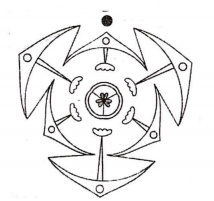 Multiple Choice Questions
Multiple Choice QuestionsWhat is common between earthworm and Periplaneta
Both have red coloured blood
Both possess anal styles
Both have malpighian tubules
Both have segmented body
In a normal adult, ascending order of concentration of following molecules is
K>Na>Fe>Cu
Na>K>Cu>Fe
Fe> Na> K > Cu
Na> Fe> K > Cu
Which of the following statements is incorrect about G0 phase
Mitosis occurs after G0 phase.
Biocatalysts can be used to exit G0 phase.
Cell volume keeps on increasing during this phase.
Cell metabolism occurs continuously in G0 phase.
Select the option having all correctly matched pairs.
A. Alkaloids (i) Carotenoid; Anthocyanin
B. Pigments (ii) Vinblastin; curcumin
C. Drugs (iii) Morphine; Codeine
A-i; B-ii;C-iii
A-ii; B-iii; C-i
A-iii; B-i; C-ii
A-i; B-iii; C-ii

Plants having the above given floral diagram are
leguminous
dicots
medicinal and perennial
having pinnately compound leaves
Select the correct statement.
Particulate matter of size 10 um can create severe damage to the lungs.
Particulate matter of size greater than 2.5 µm can get trapped in lungs and cause problems.
Particulate matter of size less than 2.5 µm penetrate deep into lungs.
None of the above.
C.
Particulate matter of size less than 2.5 µm penetrate deep into lungs.
Particulate matter mainly includes dust, soot particles, volatile hydrocarbons, some sulphate and metallic residues emitted into the air by sources such as factories, power plants, vehicles, etc. PM is usually divided into different classes based on size ranging from total suspended matter (TSP) to PM-10 (particles with diameter of 10or less) to PM-2.5 (particles with diameter of 2.5 or less). Smallest particles pose highest human health risk. Larger particles (< 10 ) can easily be expelled from lungs through mucus but finer particles (< 2.5 ) penetrate deep in lungs and can cause severe lung damage including lung cancer.
